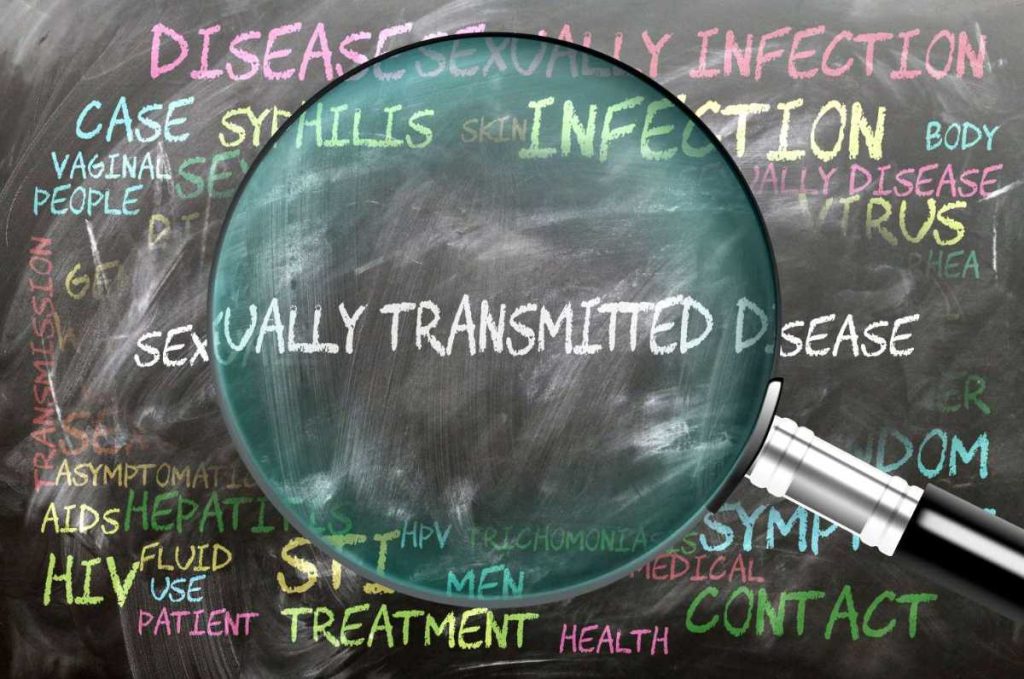Sexually transmitted diseases (STDs) represent a significant public health concern, affecting millions of individuals annually. Understanding the appropriate timing for testing is a critical component of sexual health and overall wellness. Many STDs can be asymptomatic for extended periods, meaning an individual can have an infection without displaying any noticeable signs.
This silent progression can lead to serious long-term health complications, including infertility, pelvic inflammatory disease, certain cancers, and an increased risk of acquiring other infections. Consequently, proactive and informed testing, rather than waiting for symptoms to appear, is the most reliable strategy for maintaining sexual health.
Below are the symptoms and risks associated with sexually transmitted diseases (STDs):
Recognizing the Signs: Common STD Symptoms
While the absence of symptoms is common, being aware of potential warning signs of sexually transmitted diseases is crucial. Any unusual physical changes following sexual activity should be taken seriously and evaluated by a healthcare professional. Symptoms can vary widely depending on the specific infection but often involve the genital, anal, or oral areas.
Common symptoms may include:
- Unusual discharge from the penis, vagina, or anus that differs in color, consistency, or smell;
- Pain or burning sensation during urination or ejaculation;
- Sores, bumps, blisters, or warts on or around the genitals, anus, or mouth;
- Itching, redness, or swelling in the genital or anal region;
- Pain during sexual intercourse;
- Unexplained bleeding from the vagina or penis outside of menstruation;
- Pain in the lower abdomen or testicles;
- Flu-like symptoms such as fever, body aches, and swollen glands, which can accompany primary infections like HIV or hepatitis.
It’s imperative to understand that these symptoms can also be caused by conditions unrelated to STDs. Therefore, a definitive diagnosis through professional testing is the only way to confirm an infection and receive appropriate care. A healthcare provider can perform the proper tests to determine the cause and recommend an effective treatment plan.
For individuals seeking confidential and professional services, finding a trusted provider is an essential first step. They can open favorite search engines and search for the right provider by using keywords like “STD testing near me” to obtain more localized search results.
Understanding the Risks: Asymptomatic Infections and Screening Guidelines
Relying solely on symptom recognition is an inadequate strategy for STD prevention. Many of the most common STDs, such as chlamydia, gonorrhea, and HIV, can exist in the body for months or even years without manifesting any outward signs.
An individual may feel perfectly healthy while unknowingly harboring and potentially transmitting an infection. This underscores the importance of routine screening based on individual risk factors and general public health guidelines.
While individual needs vary, general guidelines may suggest the following:
- All adults and adolescents from 13 to 64 years old should undergo testing for HIV even at least once.
- Sexually active women under 25 should be tested for gonorrhea and chlamydia annually. Women aged 25 years and above with new or multiple sex partners, or a partner with an STD, should also receive annual testing.
- Pregnant women should be tested for syphilis, HIV, and hepatitis B early in pregnancy, with additional tests for chlamydia and gonorrhea recommended for at-risk individuals.
- Gay, bisexual, and other men who have sex with men (MSM) may benefit from more frequent testing, such as every 3 to 6 months) for syphilis, chlamydia, gonorrhea, and HIV, depending on their sexual practices and number of partners.
- Anyone engaging in unprotected sex or sharing injection drug equipment should be tested for HIV and hepatitis C.
By familiarizing themselves with these suggestions, individuals will know when they should get tested and treated for STDs.
Key Moments for Testing: A Practical Timeline
Beyond routine screening, specific life events and situations necessitate prompt STD testing. These include:
Before Beginning a New Sexual Relationship
Partners should consider getting tested together to establish a baseline of sexual health and build trust within the new relationship.
After Unprotected Sex
If a condom breaks or is not used during intercourse with a partner whose STD status is unknown, testing is strongly advised. It’s important to note that some infections may not be detectable immediately. As such a healthcare provider can advise the optimal testing window for different STDs.
Upon a Partner’s Disclosure of an STD
If a current or past partner informs that they have tested positive for an STD, it’s essential to get tested immediately, even in the absence of symptoms.
When Experiencing Symptoms and Before Certain Medical Procedures
As previously discussed, any potential symptoms warrant immediate medical evaluation. Also, testing may be required before procedures like surgery or fertility treatments.
Conclusion
Prioritizing sexual health through regular STD testing is a fundamental aspect of personal wellness and public health. It transcends a mere reaction to symptoms and embodies a proactive commitment to one’s own body and the well-being of partners. Understanding the often-hidden nature of infections and adhering to recommended screening guidelines helps demystify the process and empower individuals.
By keeping the information mentioned above in mind, individuals can gain invaluable peace of mind, facilitate early intervention, and ensure that sexual health remains a well-managed and positive aspect of a healthy life.





